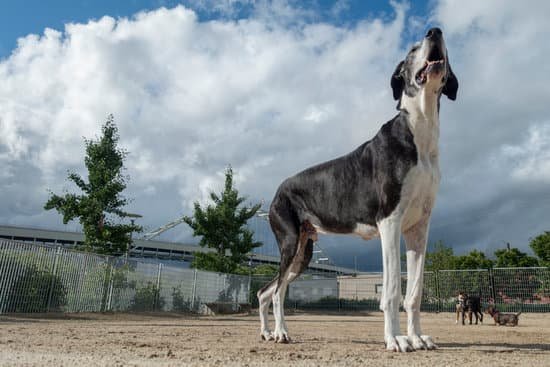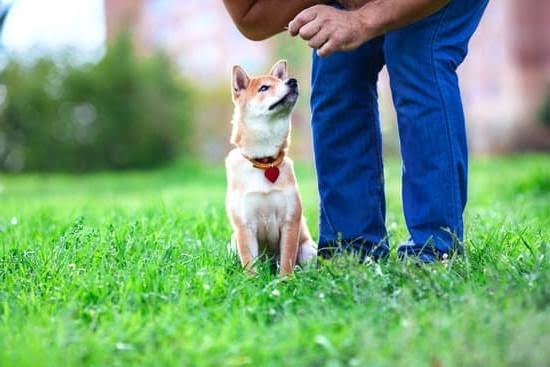Most people think of crate training as a way to housebreak a puppy, but it can also be a valuable tool for training an older dog. A crate can provide a den-like environment that a dog finds comforting, and can be used to confine a dog when you’re not able to supervise him.
The key to successful crate training is to make the crate a positive place for the dog. Start by putting a few treats in the crate and letting the dog explore it on his own. Once he’s comfortable going in and out, begin feeding him all his meals in the crate. As he gets used to being in the crate, you can start closing the door for brief periods of time.
If your dog is reluctant to enter the crate, you can entice him with a toy or a bone. Once he’s in the crate, praise him and give him a treat. Never use the crate as a punishment – that will only make the dog reluctant to go in.
The crate should be large enough for the dog to stand up, turn around, and lie down in comfortably. If your dog is still a puppy, be sure to get a crate that will grow with him.
How To Crate Train Your Dog
There are many reasons to crate train your dog. A crate can provide a den-like feeling for your dog, which can make him or her feel secure. Crating can also help with house training, as dogs are less likely to soil their sleeping area. And finally, a crate can be a great way to transport your dog safely in the car.
The key to successful crate training is to make the crate a positive experience for your dog. Here are a few tips:
1. Start by putting the crate in a room where your dog spends a lot of time, such as the family room.
2. Place a comfortable blanket or towel in the crate, and put some of your dog’s favorite toys inside.
3. Feed your dog in the crate, and give him plenty of praise when he goes in.
4. Begin by leaving the dog in the crate for short periods of time, gradually increasing the length of time.
5. Never use the crate as a form of punishment.
If you follow these tips, your dog will soon learn to love his crate!
How To Crate Train A Dog With Severe Separation Anxiety
Separation anxiety is one of the most common behavioral problems in dogs. It can be very frustrating for both dog and owner. Dogs with separation anxiety often exhibit destructive behavior, such as chewing furniture or scratching windows, when their owners are away. They may also whine, bark, or urinate and defecate in the home.
Fortunately, there are many ways to treat separation anxiety. One of the most effective is crate training. Crate training can be especially helpful for dogs with severe separation anxiety.
The basic idea behind crate training is to provide your dog with a safe, comfortable place to relax when you’re not home. Dogs are den animals, and they feel secure in a small, enclosed space. The crate should be just big enough for your dog to stand up and turn around in.
Start by putting your dog’s food and water in the crate, and toss a few treats in there, too. Once your dog is comfortable eating and drinking in the crate, begin closing the door for short periods of time. gradually increase the amount of time your dog spends in the crate.
If your dog starts to become anxious, whining, or barking, open the door and give her a few treats. Once she’s calm, close the door again. If your dog continues to be anxious, you may need to consult with a behaviorist or trainer.
Crate training can be a bit challenging, but it’s well worth the effort. With a little patience and perseverance, you can help your dog overcome her separation anxiety and live a happier, more peaceful life.
How To Crate Train An Older Dog Overnight
Crate training is an excellent way to housebreak your dog. It is also a good way to keep your dog out of trouble when you can’t supervise him.
There are a few things you should keep in mind when crate training an older dog.
The most important thing is to make the crate a positive experience for your dog.
Don’t use the crate as a punishment.
Start by putting your dog’s bed or a soft blanket in the crate.
When your dog goes into the crate, praise him and give him a treat.
Make sure your dog has plenty of water and access to a bathroom.
If your dog starts to whine or bark in the crate, don’t let him out until he is quiet.
gradually increase the amount of time your dog spends in the crate.
Once your dog is comfortable in the crate, you can start leaving him in there overnight.
Crate Method Dog Training
is a professional dog training company that offers in-home dog training services throughout the United States. We specialize in crate training and use this method to train all of our dogs. Crate training is a safe and effective way to housebreak your dog and can also be used to train your dog to behave well in your home.
The crate training method involves teaching your dog to associate the crate with positive things, such as food and toys. The dog is then gradually conditioned to spend longer and longer periods of time in the crate. Crate training is an especially good method for housebreaking puppies, as it helps to teach them to only eliminate in designated areas.
Crate training can also be used to train your dog to behave well in your home. Dogs that are properly crate-trained will not be destructive, will not bark incessantly, and will not potty in the house. Crate training takes time and patience, but it is a very effective way to train your dog.

Welcome to the blog! I am a professional dog trainer and have been working with dogs for many years. In this blog, I will be discussing various topics related to dog training, including tips, tricks, and advice. I hope you find this information helpful and informative. Thanks for reading!





